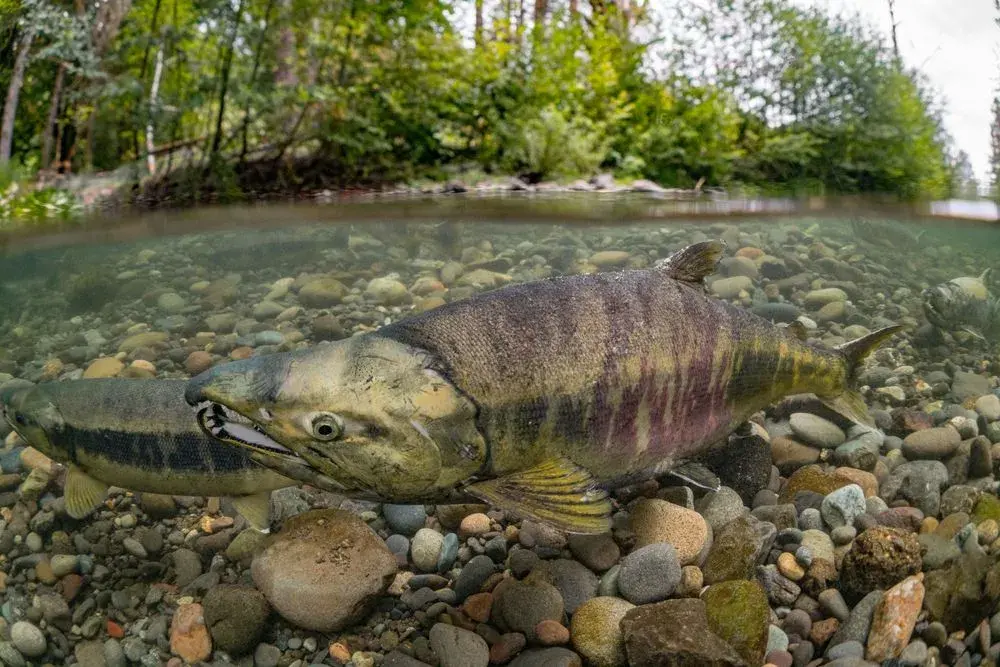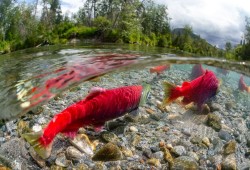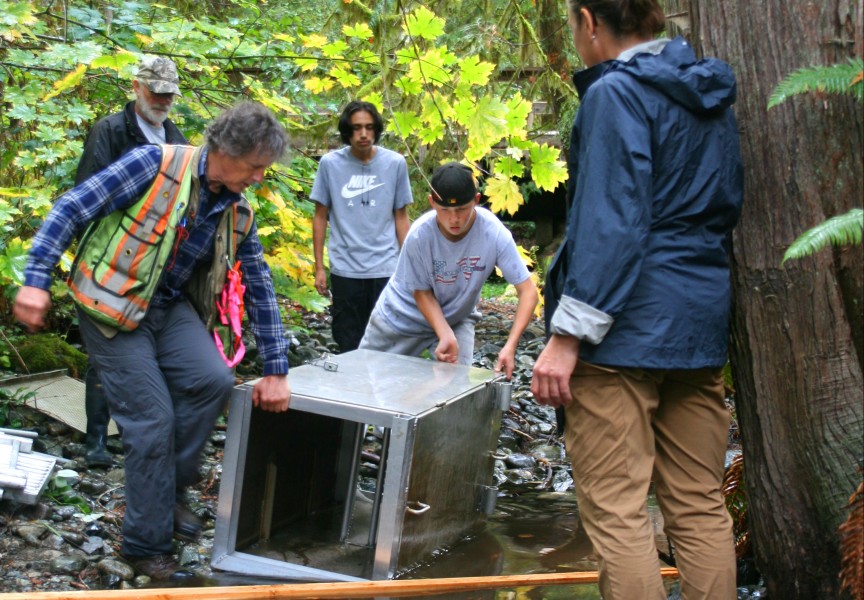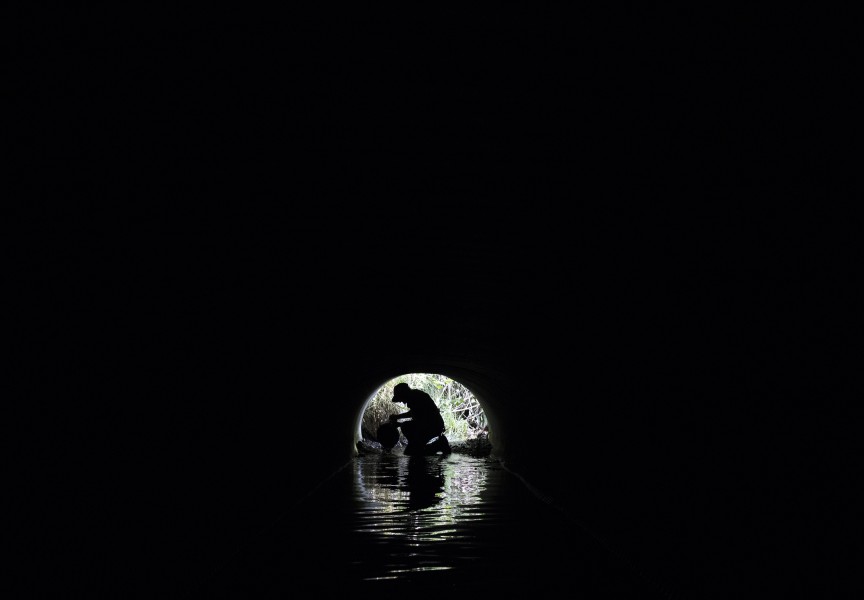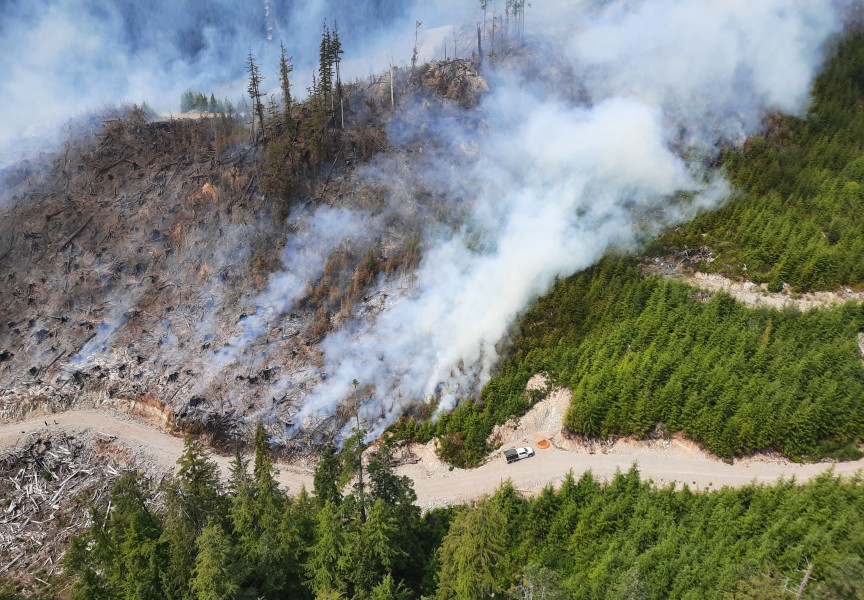Over 70 per cent of salmon are below their long-term average, according to the recently published State of Salmon report from the Pacific Salmon Foundation (PSF).
The report aims to educate and answer questions about the current conditions of salmon in B.C. and northward to the Yukon. This report comes at a time where PSF’s polls show that 85 per cent residents in British Columbia are very concerned about declining salmon stocks.
“This State of Salmon Report gives us the clearest picture yet of how Pacific salmon are faring across Canada — and it’s evident they need our help,” says Michael Meneer, president and CEO of the Pacific Salmon Foundation.
Of the six species of salmon surveyed, chum and steelhead are well below average, signaling significant conservation concern. Chum, which was once the most abundantly caught species in commercial fisheries, has experienced the most rapid decline, according to the report. Their absence has caused fisheries in the Yukon to close.
First Nations communities all along the coast of B.C., Vancouver Island and north into Haida Gwaii and the Yukon rely on salmon not only for food sovereignty but cultural ties. Fishing salmon is a part of their history and lifeblood.
For the Ka:'yu:'k't'h'/Che:k'tles7et'h' First Nations, their cultural ties to salmon have become restrained because their waters can’t support them anymore. Sockeye has to be fished from neighboring nations' territory.
“Not being able to fish in our own territory, we risk a disconnection to the land and the waters. Spiritual being and everything else for KCFN is at stake,” explains Katarina Duke, KCFN’s manager of Marine Conservation and Fisheries.
Sabrina Crowley, a regional biologist with Uu-a-thluk, agrees.
“A lot of the local salmon populations nations rely on are key in providing food and opportunities to harvest locally to support the community,” she said. “But there are cases where those populations have declined to the point where the community not only cannot rely on them, but have also restricted or even stopped harvesting altogether in order to rebuild the stock of concern.”
Most people will assume that climate change and rising water temperatures are the cause for species decline, and that is true to a point, according to the PCF.
“Salmon are expected to shift north as the climate changes,” says Katrina Connors, senior director of the Pacific Salmon Foundation. “There’s a perception that northern areas will provide refuge for salmon as climate change pushes salmon to their limits in their southern range. However, the poor state of salmon and the rapid pace of climate change in these northern regions suggest that these salmon actually need more of our help.”
The PSF report shows that there are many other factors that are pushing salmon to the brink. Industrial development - pipelines, agriculture, mining, damming - has blocked streams and made it impossible for salmon to reach their spawning grounds. Hatcheries release five billion salmon into the North Pacific yearly, causing competition and unhealthy in-breeding, reducing their adaptive capacity. Urban development threatens salmon habitat. Aquaculture, fisheries, predation are also factors affecting the wide-spread declines outlined in the report.
Despite all the negative news, there is hope in the report. Several salmon species are showing above average population growth. Chinook, sockeye and coho are doing exceptionally well in southern regions. Fraser River coho are above average for the first time in a decade. Salmon in the Cowichan River have rebounded from numbers near extinction only 15 years ago.
“Overall, the state of salmon in B.C. and the Yukon should raise our collective alarm. Most species in most regions are declining. However, there is hope. Some species are recovering and showing remarkable resilience in the face of increasing threats like climate change,” says Connors.
PSF hopes information in the report will empower First Nations and decision makers with the data necessary to revitalize salmon populations. Helping wild salmon recover requires partnerships focused on conserving and rebuilding ecosystems for populations to once again thrive.
Crowley sees a way forward by rebuilding stocks with habitat restoration.
“We are looking at all the options at what will bring salmon back,” she said. “We may have to fish for species that are available and be grateful when we do get some.”
For her, it’s more than just a food source. It’s a way of life.
“We believe we have a responsibility to take care of all the relatives. It doesn’t matter if it’s a species of salmon we don’t want to eat. It still has intrinsic value.”
It may be generations before salmon numbers reach a state of abundance, but with continued information and the dedication of many organizations and First Nations, there is hope for communities and the salmon they rely on.
“With access to these data-driven insights at our fingertips, we can take decisive action to protect salmon for generations to come,” states Maneer.
More in-depth information on the report findings can be accessed at the State of Salmon website at https://stateofsalmon.psf.ca/

